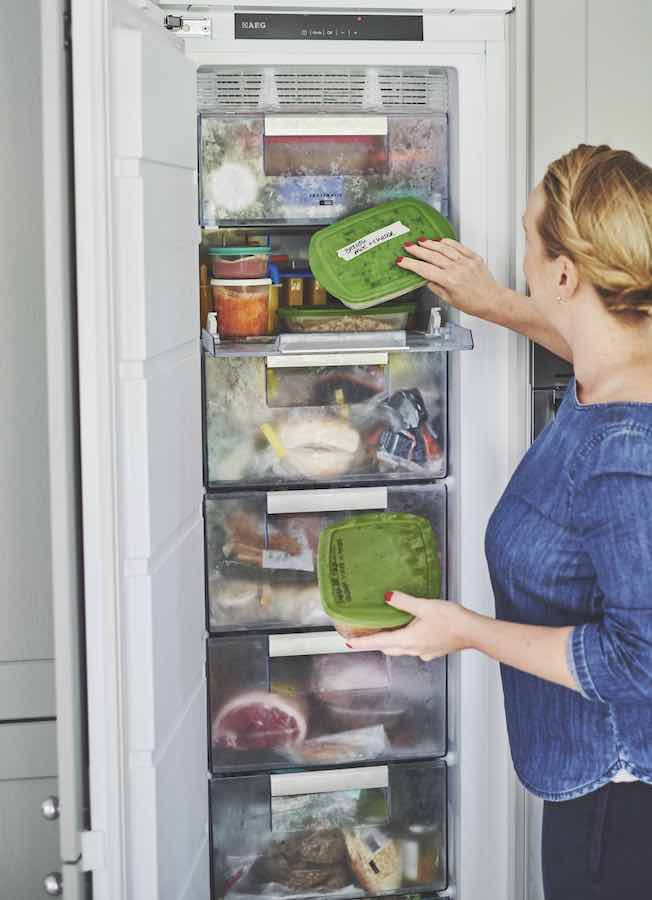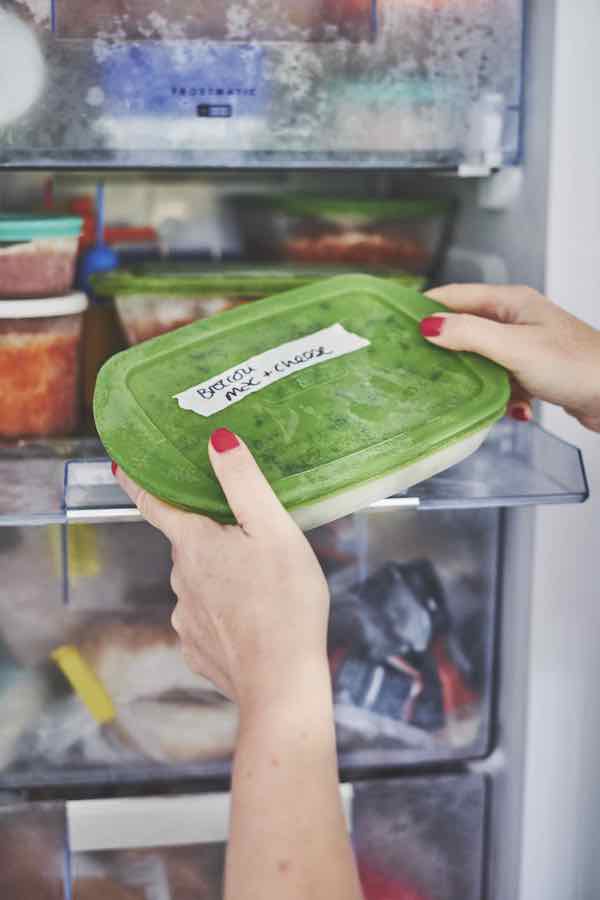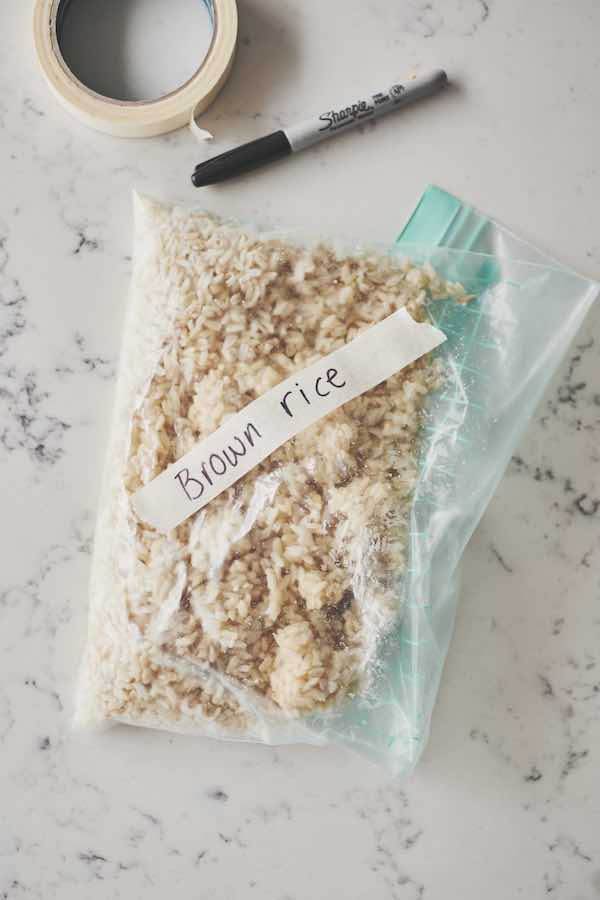
how to freeze and defrost safely and easily
Simple tips to help you know how to freeze and defrost safely so you can make the most of your freezer
In my last post, I shared some of my favourite things to keep in the freezer, along with what I add to those meals to make them extra delicious when we eat them. I get lots of questions in class about what can and can’t be frozen, how to freeze, and how to defrost safely so here is a quick guide.
Choose the best container
I freeze food in glass freezer and ovenproof containers with rubber lids – Pyrex do a great range and I’ve had mine for years. You can buy them here.

I also use and re-use plastic zip top bags – I use these big ones from Ikea. Rather than throw them away, I wash them after using them, dry them and re-use them to avoid wasting plastic. I keep labelled bags in the freezer all the time for dry things like breadcrumbs and frozen rice so that I can just add to them.
If you freeze food in too large a chunk, the defrosting stage seems endless and off-putting. Freeze in individual portions, or in bags, where you can make the food flat and thin, rather than in a big block. This speeds things up no end.
 how to freeze without forgetting what you’ve frozen
how to freeze without forgetting what you’ve frozen
Always label whatever you’re freezing. I once made a crumble with frozen parsnips when I’d thought they were apple. Now I always label.
I keep a roll of paper masking tape and a Sharpie pen in my freezer bag drawer along with a notebook with a list of what’s in my freezer. I cross things off as I use them. Much easier than rummaging through when I’m meal planning and shopping for the week or starving and looking for food.
What can and can’t be re-frozen
I’ve written my list of freezer fillers here.
The most important thing to remember is don’t re-freeze raw meat or fish that has already been defrosted. Previously frozen meat and fish can be cooked and then frozen again as part of a meal. Once that meal has been defrosted, it can’t be refrozen.
Most cakes and tray bakes can be frozen. Either whole or in slices.
Most things with egg as the main ingredient don’t freeze well. But egg whites can be frozen.
You can also freeze butter and milk.
Vegetables with a high water content don’t freeze well – although they can be cooked into a soup and blitzed.
How to freeze and defrost
- Let hot food come to room temperature – either spread it onto a plate or shallow dish to speed this up, or leave it on the side for an hour before putting it in the fridge to cool.
- Once food is cool, wrap it in a freezer container or bag (see notes above) – one that means you don’t have much air in there. Label and freeze.
- Defrost things by pulling them out in the morning and leaving them on the side for a few hours. Start them off defrosting by filling a sink with hot water and dropping the packet in – make sure its water tight first. Or put them in the fridge the day before (I’m never organized enough to do this but this is the way you are meant to defrost things).
- Once your food is defrosted, heat it until it is bubbling and piping hot. I’d let anything with cooked meat in simmer for 8-10 minutes before serving to ensure it is properly heated.
Sign up for more
Sign up for my free newsletter. You’ll get free seasonal recipes, tips and videos. You’ll also be first to hear about my online and in person courses.
I agree to be emailed about your products and services
